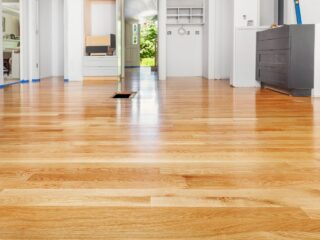
In the world of interior design, trends come and go. Yet, there’s one element that’s stood the test of time – wooden panels. They’ve graced the walls of homes and offices for centuries, exuding a charm that’s hard to resist.
Wooden panels are more than just a nod to tradition. They’re a testament to the timeless appeal of natural materials in modern interiors. Offering a blend of warmth, sophistication, and versatility, they’ve become a favorite among designers and homeowners alike.
Natural Aesthetic and Warmth
Grounded in the simplicity of nature, wooden panel offer an irreplaceable aesthetic and warm appeal to modern interiors. These panels infuse spaces with a sense of earthy tranquility, their natural grains and tones echoing the spirit of the outdoors.
Architects and interior designers often lean on the varied textures and patterns offered by distinct types of timber. From the rich, dark hues of mahogany and the durable charm of oak to the light and airy appeal of ash and pine, each variant of wooden panel brings a unique allure. They, drawing on nature’s palette, lend an organic grace to modern design sensibilities.
Not only does the wooden panel evoke a visual connection with nature, it also contributes to the tactile experience. Imagine running your hand over a smooth timber surface, feeling its warmth seep through your skin, experiencing a tangible link to mother nature. That’s the allure these panels hold. Such sensuousness encapsulates the originality of wooden panels, a quality difficult to emulate by synthetic materials.
Versatility in Design
Wooden panels showcase extreme flexibility in design, enhancing both classical and contemporary interiors. Neither tied to a specific style nor confined to a certain space, they make themselves at home in varied settings. Whether it’s accenting a rustic lodge or lending sophistication to a sleek urban loft, wooden panels seamlessly blend with the overarching design narrative.
Insulation and Acoustic Benefits
Aside from their allure and versatility, wooden panels boast of insulation and acoustic benefits that well complement modern interior design.

For one, a distinguishing characteristic of wooden panels is their outstanding thermal insulation. They offer a significant reduction in energy consumption, thereby promoting efficiency in homes and commercial spaces. For instance, according to a report by the Wood Panel Industries Federation, wooden panels displayed superior insulating properties compared to other materials, such as aluminium and brick.
On the other hand, wooden panels possess impressive sound-absorbing properties, transforming interiors into quieter, more serene spaces. Scientific studies, such as those by the University of British Columbia, confirm that wood’s porous structure helps in noise reduction, improving overall indoor acoustics. This is particularly desirable in bustling urban dwellings or open plan offices, where ambient noise can be a concern.
Sustainable and Eco-Friendly Option
Turning to another significant advantage, wooden panels standout as a sustainable option. Harvesting timber for these panels, which adjusts to diverse construction needs, signals a commitment towards environmental preservation. For instance, sourcing from sustainably managed forests ensures that trees get replanted at a consistent rate. This cyclical process decreases deforestation, thus preserving natural habitats for various flora and fauna.
In addition to their origin, wooden panels exhibit an extended lifespan, translating into long-term cost efficiency. Couple this with their biodegradability , and wooden panels emerge as eco-friendly. At the end of their usability, they decompose, returning their constituents back to the ecosystem rather than filling up landfills like synthetic materials.
Easy Maintenance and Longevity
Wood paneling in modern interiors doesn’t just offer a unique, aesthetic touch. It provides practical advantages, too, notably easy maintenance and impressive longevity. With wooden panels, property owners gain peace of mind from knowing these design elements resist wear and tear over time, seldom demanding high upkeep costs.
Application in Various Spaces
Wooden panels find their utility in a plethora of spaces. From expansive living rooms to cozy bedrooms, they inject an element of panache and sophistication in each space, each time. This section explores the diverse applications of wooden panels in modern interiors.
Living Rooms
Living rooms typically serve as central spaces in homes. Wooden panel applications in living rooms express endless creativity. They seamlessly blend with different styles, whether it’s minimalist, Scandinavian, mid-century modern, or industrial. For example, wooden panels provide a contrasting background for bright, bold furniture or, on the other hand, accentuate a calm, neutral palette.
Bedrooms
Bedrooms demand a sense of tranquility and warmth. Wooden panels cater to these demands effortlessly.

They instill a sense of calm, making it a sanctuary after a long day. A wooden headboard, flooring, or even a feature wall transitions a bland space into a haven of comfort.
Kitchens
Kitchens represent a space of hustle and bustle. Wooden panel integration here creates a visual element that offsets the sterility often associated with modern appliances. Their resilient nature means they can stand up to daily kitchen activities – spills, splashes, and all.
Office Spaces
Office spaces foster productivity and focus. Wooden panels conjure a serene yet stimulating environment. Take, for example, a wooden panel wall behind a work desk. It not only adds a rustic charm but also provides additional insulation, enhancing the comfort level.
Restaurants and Cafes
In commercial establishments like restaurants and cafes, wooden panels amplify the ambiance. A well-placed wooden panel wall or ceiling can inject a dose of coziness and intimacy. Plus, it’s practical for sound dampening – a much-needed feature in bustling eateries.
Final Thoughts on Wooden Panels
Wooden panels have, through the years, maintained their place in the toolbox of the modern interior designer. Despite changing trends, they’ve never lost their charm. Instead, they’ve seamlessly adapted, demonstrating adaptability to fit into various design aesthetics, from minimalistic and Scandinavian to rustic and industrial.
Their natural aesthetic appeals to the human desire for connection with nature, helping to facilitate an atmosphere of tranquility in areas where they’re utilized. Take, for example, the popularity of wooden panels in living rooms and bedrooms; spaces where comfort and warmth are paramount.
Moreover, wooden panels act as an effective insulation solution, enhancing the energy efficiency of spaces where they’re installed. In places with colder climates, they help keep the warmth in, reducing the need for excessive heating.





